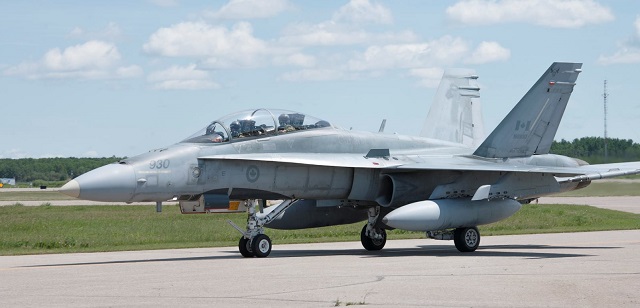The Royal Canadian Air Force’s fleet of CF-18 fighters is unable to meet the nation's commitments to NATO and the North American Aerospace Defense Command (NORAD) due to a lack of pilots and technicians, according to a report by the Office of the Auditor General of Canada.
The problem is exacerbated by Ottawa’s ageing fleet of 76 CF-18 aircraft, which were purchased in the 1980s, are in some cases nearly 20 years past their original expected replacement date and have not received a significant combat upgrade since 2008. What’s more, the Department of National Defence has no plan to upgrade the combat capability of the CF-18 fleet even though the aircraft are expected to fly until 2032, the date by which the RCAF expects to have replaced its fleet with new fighters.

Royal Canadian Air Force
The Government of Canada's stated intention is to have enough fighter aircraft available every day to meet the highest NORAD alert level and Canada’s NATO commitment at the same time. But the Auditor General’s report found that would require the National Defence to increase the number of fighter aircraft available for operations by 23%.
Yet, it is difficult for the RCAF to improve its CF-18 availability because 8% of technician positions in CF-18 squadrons were vacant and 14% were filled by technicians not yet fully qualified to do maintenance.
“Since 2014, departures of experienced CF-18 technicians have reduced the overall expertise of the fighter force, which has negatively affected fleet maintenance,” says the Auditor General. “Because of these departures, from 2014 until 2018, the average maintenance hours needed for every hour that a CF-18 flew increased from 21 to 24. In addition, as the fleet ages, it will become more difficult and take longer for technicians to maintain the CF-18s.”
Unless there are more experienced technicians to perform maintenance, the number of flying hours available for each CF-18 pilot will decrease, the report adds. To maintain and develop new skills to sustain the fighter force’s capability, CF-18 pilots are expected to fly 140h per year. But the report found that in the 2017 and 2018 fiscal year, 28% of pilots flew fewer than the minimum 140h, partly a result of a shortage of technicians to maintain the aircraft.
The RCAF is also dealing with a pilot shortage, with only 64% of the trained CF-18 pilots it needs to meet its commitments, says the Auditor General. However, National Defence is unlikely to be able to close the gap because pilots are also leaving the fighter force faster than new ones could be trained, the report says.
“According to National Defence, between April 2016 and March 2018, the Royal Canadian Air Force lost 40 trained fighter pilots and produced only 30 new ones. Since then, an additional 17 fighter pilots left or stated their intention to leave,” says the Auditor General.
In 2017, the Canadian National Defence tried to improve its fleet readiness by purchasing 18 used Australian F/A-18s and spare parts, which it planned to modify to be nearly identical to its CF-18 fleet.
“However, the purchase will not fix the fundamental weaknesses with the fleet: the aircraft’s declining combat capability and the shortage of personnel. The Australian F/A-18s will need modifications and upgrades to allow them to fly until 2032,” says the Auditor General. “These modifications will bring the F/A-18s to the same level as the CF-18s but will not improve the CF-18’s combat capability. In addition, National Defence still does not have enough technicians to maintain and pilots to fly the aircraft.”
Without plans to replace its current fleet of aging aircraft until 2032, the Auditor General recommends the National Defence should develop and implement a strategy to recruit and retain fighter technicians and pilots, as well as come up with a plan to transition to new aircraft. National Defence agreed with the recommendation and says a new recruitment effort and retention strategy would be completed by fall 2019.
Source: FlightGlobal.com



















